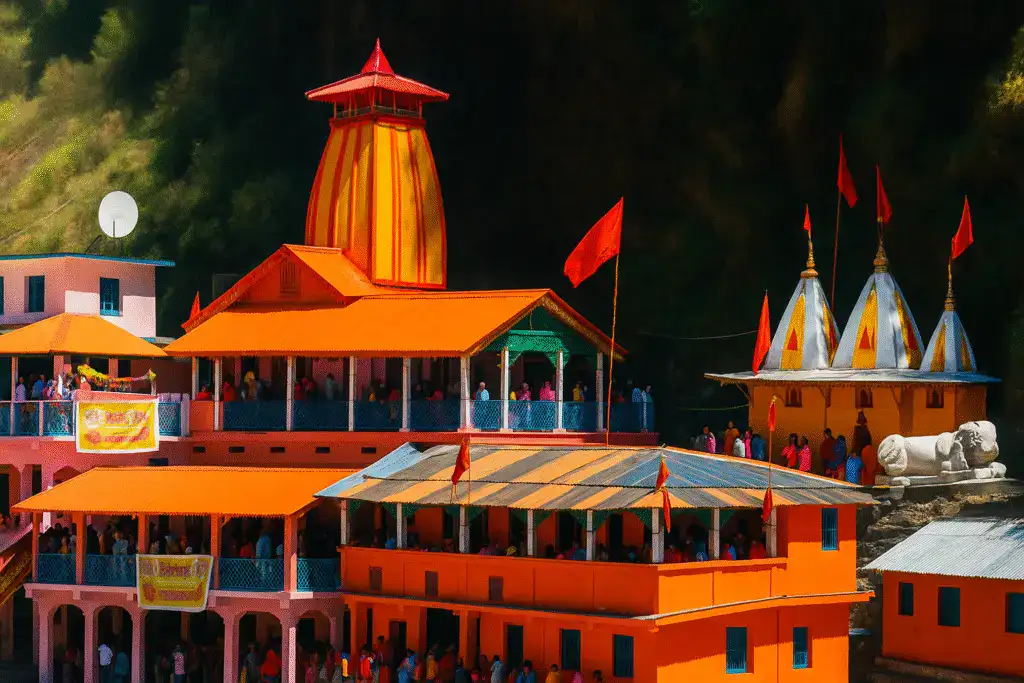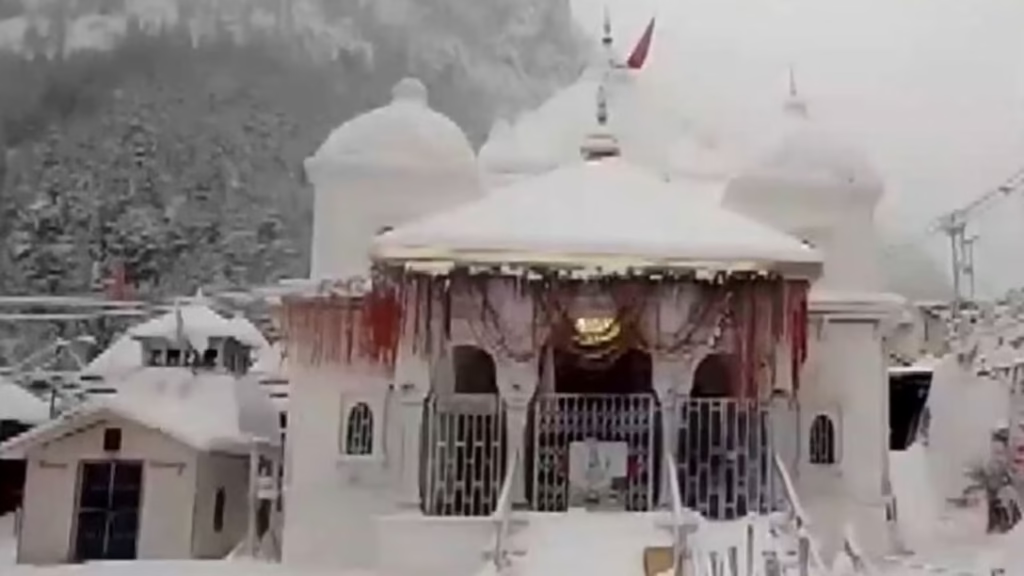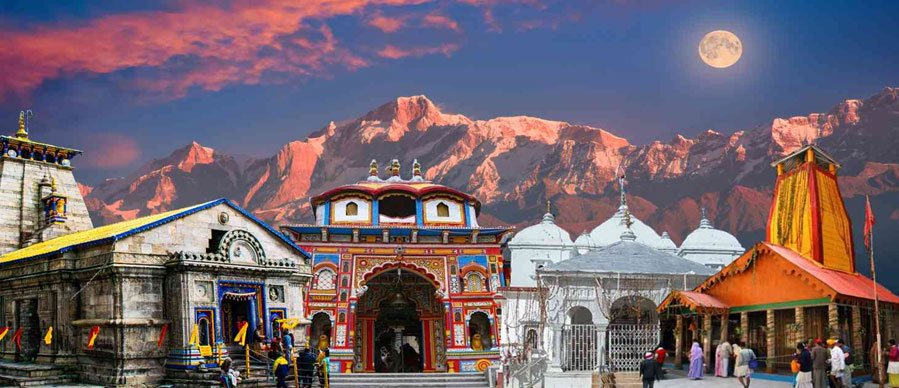
🏔️ Whispers in the White: Finding the Soul of Char Dham in Winter
Hello, fellow dreamers and mountain lovers!
There is a question I get asked a lot: why travel to the Himalayas when they are sleeping? Why go when the legendary gates of Yamunotri, Gangotri, Kedarnath, and Badrinath the Char Dhams are sealed, covered in metres of snow, and officially closed for pilgrimage?
My answer is simple, and it comes straight from the heart: Because that is when the mountains truly speak.
In the peak season, the energy is electric, full of devotion, human chatter, and the hustle of a grand yatra. The crowds disappear, and the noise of a thousand footsteps is replaced by the crunch-crunch-crunch of your own boots on fresh snow. It is no longer just a pilgrimage of travel; it becomes a journey of listening.
This is the story of the Winter Dhams—the sacred, less-traveled route where the deities, and the faith, move to lower, more accessible winter abodes, allowing the spiritual heartbeat of the Himalayas to continue, sheltered in tiny, soulful villages.
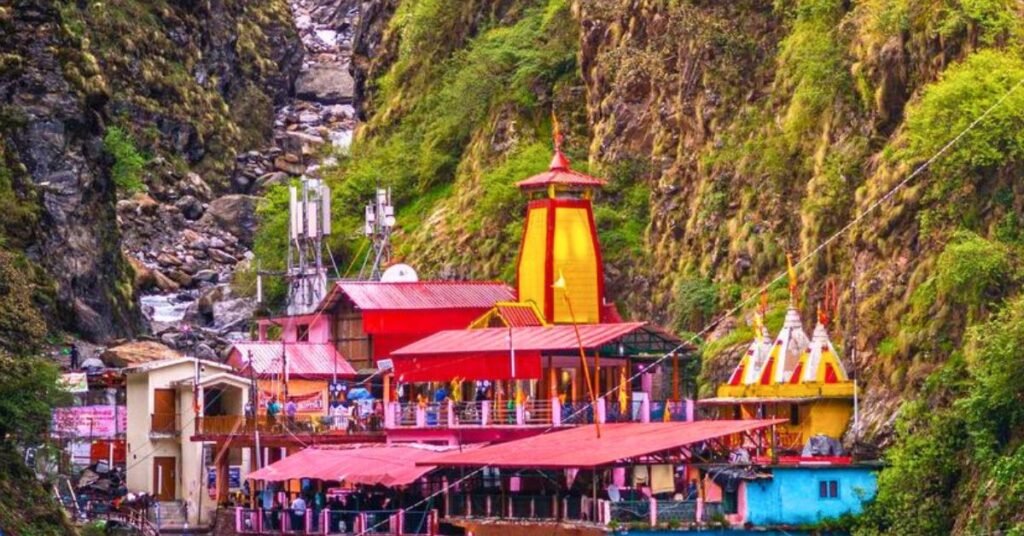
Yamunotri: The Gentle Start in a Village of Ancient Whispers
Our journey begins where the Yamuna River takes its breath. In summer, the trek to the main shrine is arduous and buzzing with thousands of devotees. But when the deity, Goddess Yamuna, moves, she settles into the tranquility of Kharsali Village.
The first thing you notice is the air. It’s so crisp it feels like it’s cleaning your lungs with every intake, carrying the faint, woody scent of pine and deodar smoke from village hearths. Kharsali, also known as Khushimath, is a gorgeous little hamlet. It’s quiet, nestled deep in the valley, and wrapped in a pristine white silence that you can almost hear.
The idol of the Goddess is worshipped for six months in the ancient, beautiful Shani Dev Temple. This temple isn’t a towering stone structure like the main Dhams; it is an architectural wonder of old wood and slate, a four-story marvel that looks like it has grown organically from the very earth it stands on. Inside, the light is soft, filtered through small wooden windows, and the presence of the Goddess feels intensely personal, intimate, like being welcomed into a family home.
Walking through Kharsali, you are not a tourist; you are a guest. The local Garhwali people, warm-hearted and hardy, are the keepers of this winter flame. You might share a cup of warm, strong tea with them, hearing stories of the deep snows, of grandfathers who carried the palanquin, and of how the quiet, snowy paths become a meditative trail.
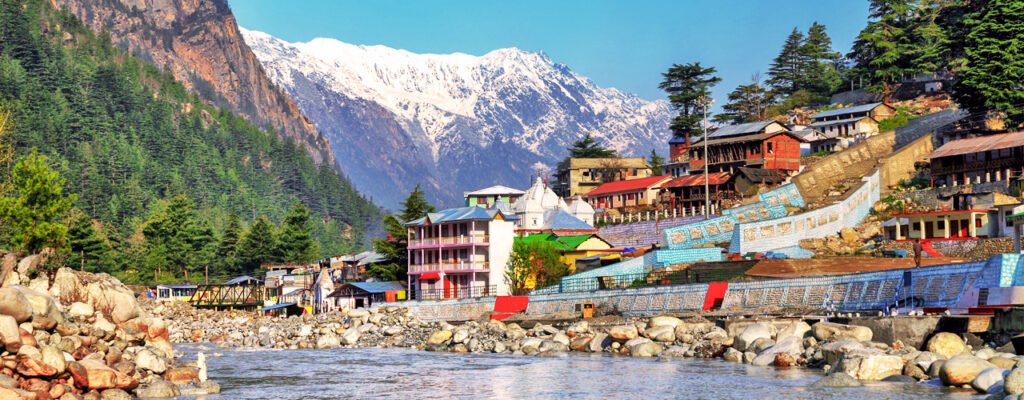
Gangotri: Where the Frozen Ganga Finds Her Mother’s Home
Our next stop takes us to the Upper Garhwal region, following the path of the Bhagirathi River (Ganga). When the Gangotri shrine closes, Goddess Ganga moves to the picturesque Harsil Valley, taking up residence in the beautiful village of Mukhba (Mukhwa). Locals lovingly call it Maa Ganga’s Maayka—her mother’s home.
The drive here is an absolute dream, passing through the renowned Harsil apple orchards, now barren-limbed but stunning, their skeletal branches dusted with snow, creating a black-and-white masterpiece.
Mukhba is pure, unadulterated mountain romance. It sits at a slightly higher elevation, and in deep winter, the snow often completely blankets the roads just beyond, sealing it off in a peaceful embrace. The temple here, though simple, glows with the fervor of devotion.
The most soulful experience? Standing by the Bhagirathi River. In summer, it roars, a glacial force of nature. The cold here is deeper, reaching into your bones, but the light—that brilliant, Himalayan winter light that hits the snow and reflects back a blinding clarity—fills you with an inexplicable warmth. Kedarnath, Lord Shiva’s eternal abode, is arguably the most dramatic of the Dhams, sitting close to 12,000 feet. When the main temple becomes a fortress of ice and snow, Lord Kedarnath’s Utsava Murti (festival idol) is reverently moved down to Ukhimath, residing in the ancient Omkareshwar Temple.
Ukhimath is a bustling little town even in winter, but its spiritual atmosphere is profound. It’s also the winter home for the deity of Madhyamaheshwar, one of the Panch Kedars. The temple here, nestled comfortably, carries the immense power of the main Kedarnath shrine, but without its terrifying, high-altitude severity.
The emotional side of visiting Kedarnath’s Doli Sthal (palanquin’s resting place) in Ukhimath is unlike any other. When you look up from Ukhimath, you can see the distant, colossal snow-capped peaks—the very mountains that cradle the main temple. You know that miles above, the great stone shrine is silent, covered in a sacred white shroud, with only a few temple guards and the elements for company.
Visiting the Omkareshwar Temple feels like keeping a vigil. The rituals are performed with the same ancient Vedic chants, but the audience is small—just a handful of priests and devoted locals. There is a deep, palpable sense of respect. The emotional weight of the place settles on you: realizing that even the Almighty needs to retreat to safety, a humbling reminder of nature’s supreme power. You stand there, warmed by a dhuni (sacred fire), gazing at the distant, frozen majesty, and you understand that faith is not about the grand, exposed building; it’s about the unbreakable, continuous ritual carried down to the valley.
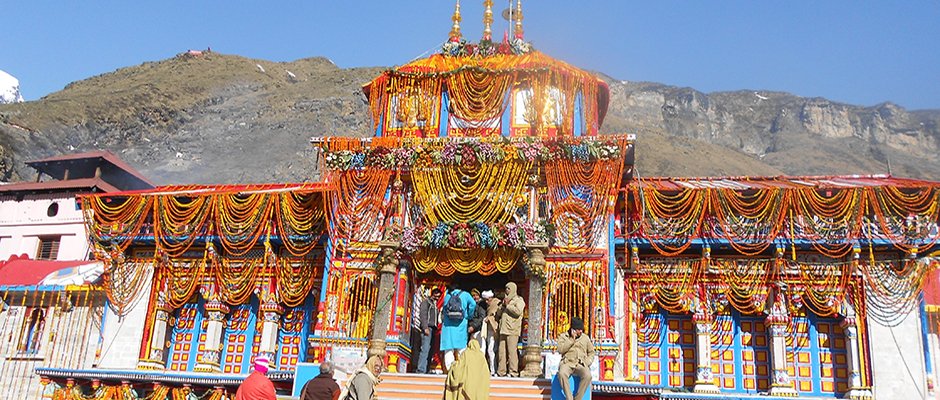
Badrinath: The Divine Calm in the Valley of the Pandavas
Our final stop takes us to Lord Vishnu’s domain. Badrinath closes later than the others, but its winter journey is equally majestic. The idol of Lord Badri is brought down to a lower, safer altitude in the Chamoli district, settling at Joshimath and more specifically, Pandukeshwar.
Joshimath, the gateway to many Himalayan expeditions, hosts a part of the deity’s reverence at the Narsingh Temple. But the true winter home of the main idol is the Yogdhyan Badri Temple in the historically rich village of Pandukeshwar. Legend says King Pandu, the father of the Pandavas, meditated here to atone for a sin, giving the place its name and its ancient, meditative atmosphere.
This valley, even with snow covering the terraced fields, exudes a divine calm. You are surrounded by colossal, snow-dusted peaks, but the immediate environment feels sheltered, serene, almost blessed. At the Yogdhyan Badri Temple, the idol is not standing but in a meditative posture (yog dhyan). The feeling is one of profound peace.
The biggest visual change here is the snow-covered valleys that stretch for miles. The Alaknanda River, though ice-fringed, flows with an enchanting turquoise intensity. With the big crowds gone, you see the true, unhurried life of the mountains—the children playing on snow mounds, the men bundling firewood, the women weaving woollens.
🎒 Winter Whispers: Essential Tips for the Sacred Journey
A winter visit to these sacred places isn’t a vacation. It’s an experience that deserves respect, preparation, and a bit of grit.
Warmth is Non-Negotiable: Leave fashion at the door. Think layers. Start with thermal underwear, add fleece, then a waterproof, windproof, down jacket rated for sub-zero temperatures.
The Power of Accessories: Invest in proper waterproof gloves (not knit), thick wool socks, and a sturdy cap that covers your ears. A lot of body heat is lost from the head and hands.
The Right Boots: Choose waterproof, high-ankle boots with solid grip for walking on snow and icy patches.
Altitude and Health: The winter routes—Kharsali, Mukhba, Ukhimath, Pandukeshwar—sit at lower, safer altitudes than the main Dhams, but the cold can still take a toll. Pack a small first-aid kit, stay hydrated (it’s easy to forget in the cold), and drink warm water. Check road and weather conditions each morning before you start.
Respect the Silence: You are visiting the winter homes of the deities. Local communities are small and reserved. A warmer, more human rendering:
When you visit the temples, dress modestly and always ask before you photograph people or rituals. The mountains are serene; take a moment to listen.
Would you like this rephrased for a particular audience or in a different tone, such as more poetic or more straightforward?


